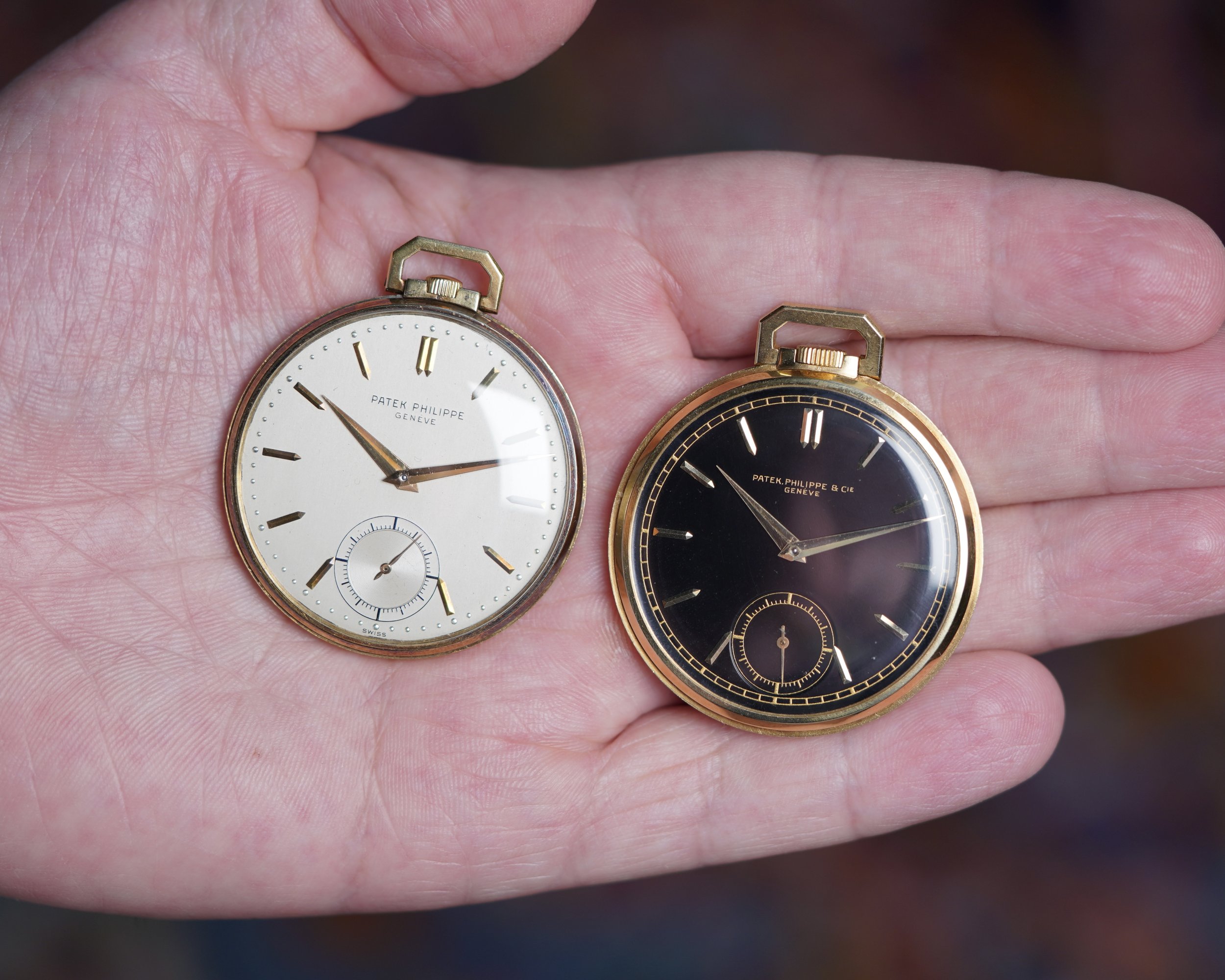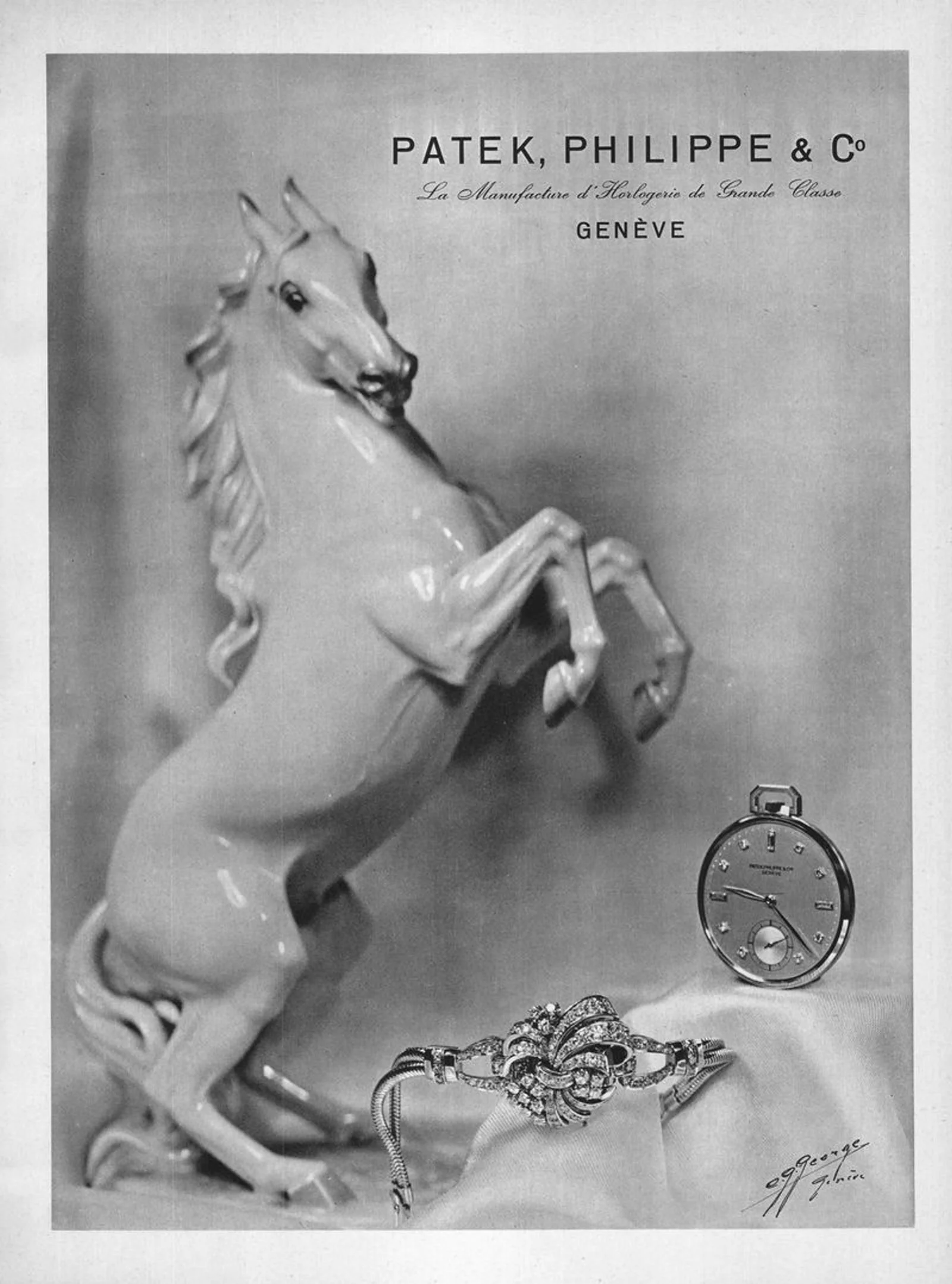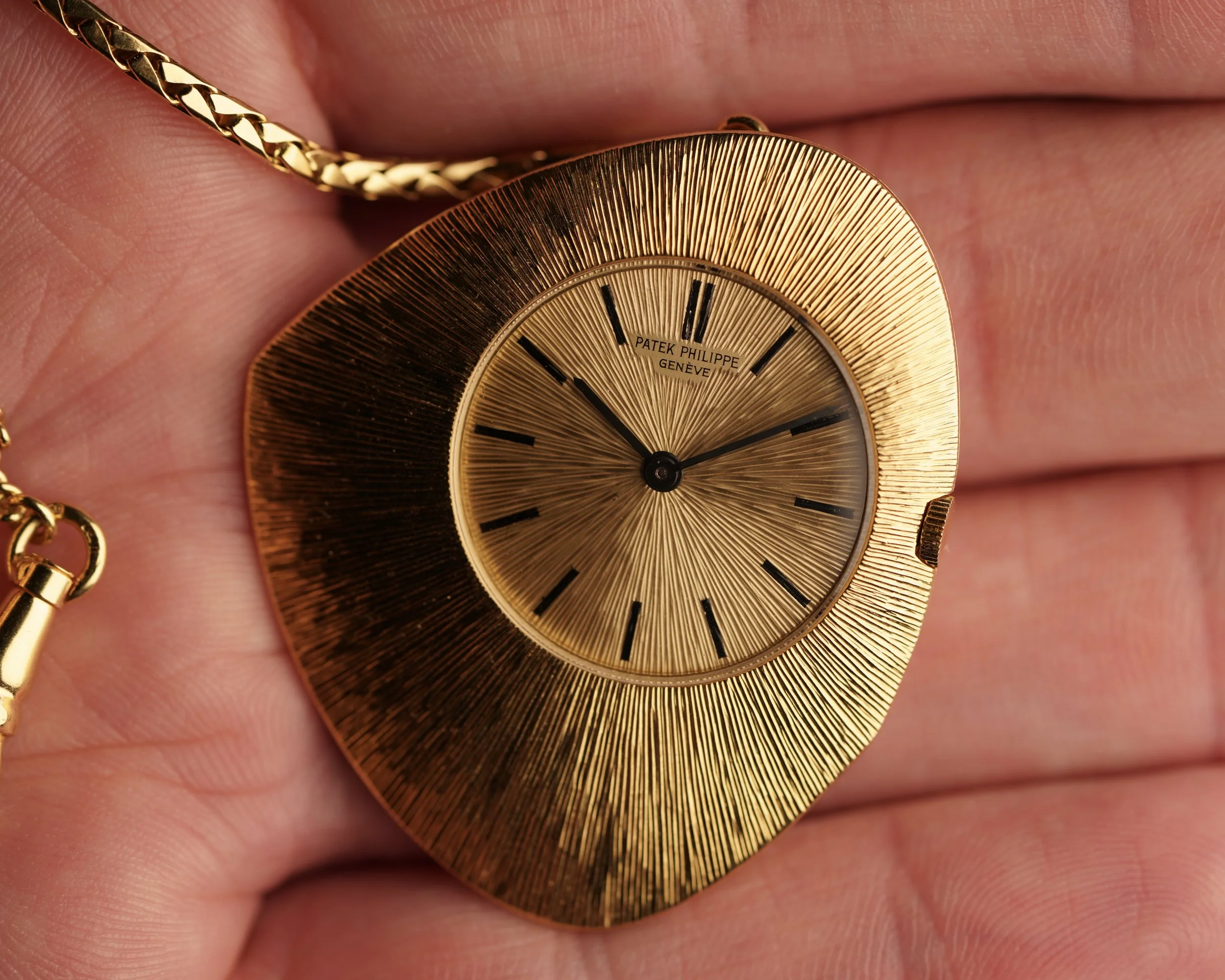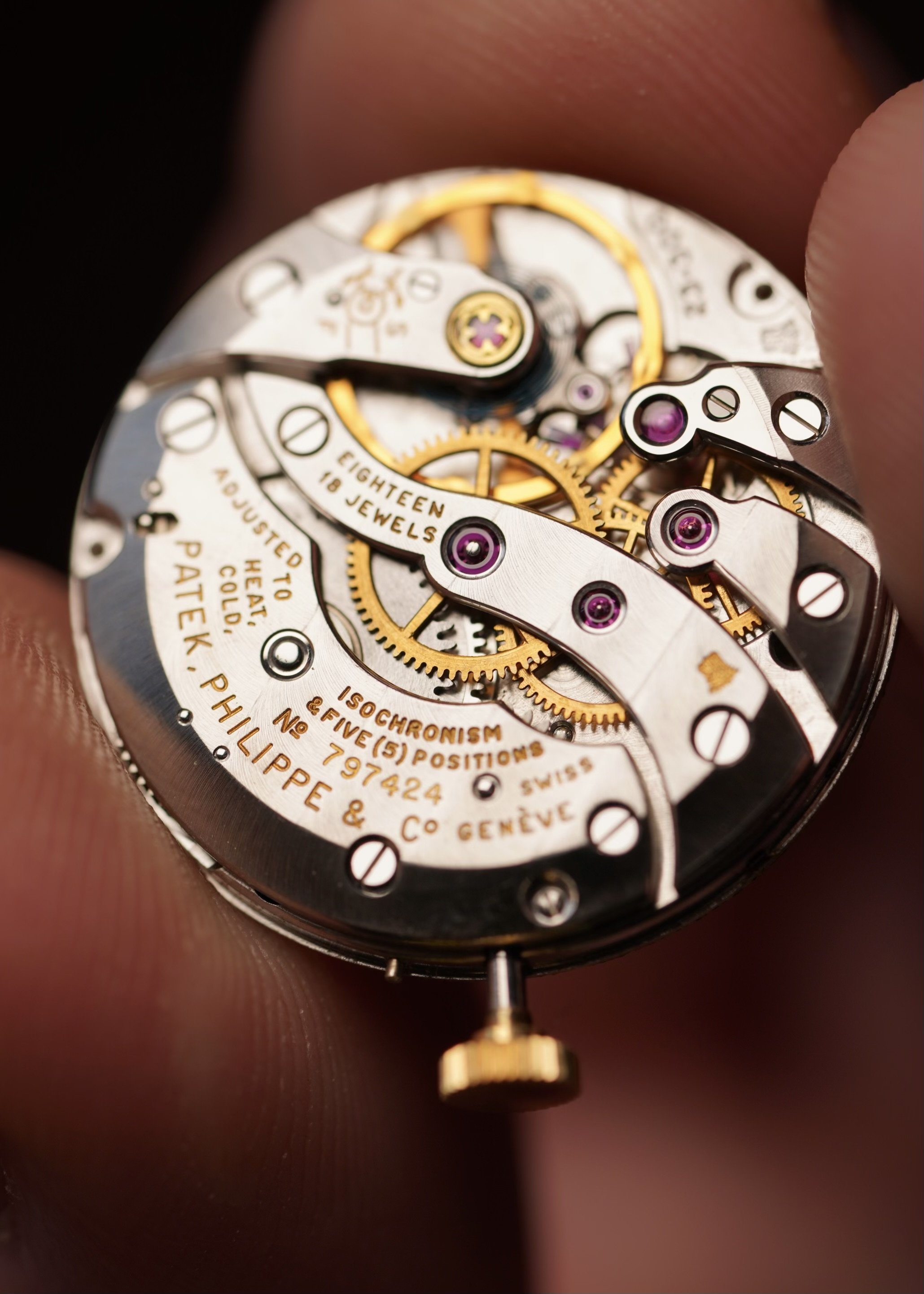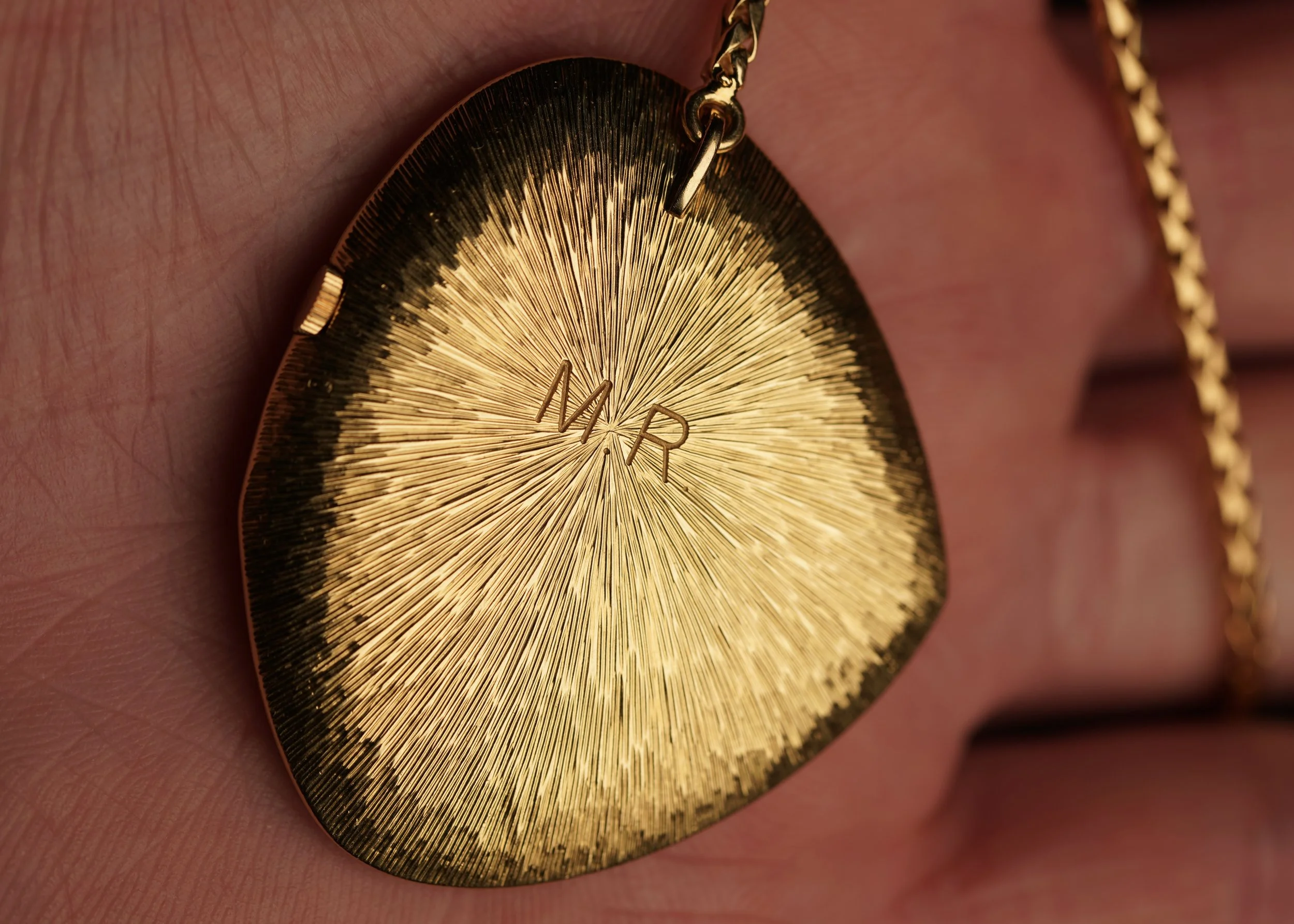Undervalued: Why Your Perspective Should Change About Patek Philippe Pocket Watches
By Charlie Dunne
My newfound perspective on Patek Philippe timepieces over the past 6 months is somewhat of a contrarian one. I would prefer to collect Patek Philippe’s pocket watches as opposed to wristwatches. I know, this is probably a bit difficult to relate to. Not wearing a watch on the wrist is a bit foreign to most. Don’t get me wrong, I am in no way abandoning collecting wristwatches. I love the search for vintage Memovox watches or time-only Jaeger-LeCoultres. I have also spent countless hours searching for vintage 36mm Rolex models hoping to highlight the beauty of simple and oversized Oyster Perpetuals. However, when it comes to Patek, we all know and love the wristwatches. There are legions of Calatrava lovers, obsessive chronograph collectors, and of course, the Nautilus club. Yet, with so much acclaim around the brand the pockets remain unadmired to so many of these same enthusiast, and that is a shame.
Far too many Patek wristwatches undergo unnecessary restoration and case polishing. When it comes to trophy pieces - highly admired complicated wristwatches such as the 1518 - many of these watches that make it to public sale feature undisclosed restoration such as laser welded cases, dial cleaning, replacement parts, etc. I personally love examples which aren’t sought after by all, and, more importantly, as original as possible. Many of Patek Philippe’s pocket watches present a better opportunity for collectors that share the same outlook. Particularly when it comes to the simple, time-only examples. One of the key benefits I find in non-complicated Patek Philippe pocket watches is that they often are not polished. My theory is because they do not require as frequent servicing, nor do they command the high prices worthy of auctions, so they’re often left alone. In contrast, high-profile complicated models can often become “beautified” for the main stage at auction. Instead, the simple pocket watches, whether +100 years old, or from the second half of the 20th century, can be found without their integrity compromised, and at highly attractive price points. Moreover, pocket watches often accompany traces from the past via engravings, or details pertaining to esoteric retailers. As we will see within several of the following timepieces, there is a tremendous amount of history and stories waiting to be uncovered within pocket watches
Below are a selection of several pocket watches Wind Vintage has uncovered over the past year which we believe not only represent exceptional value, but will hopefully enlighten you to this underrepresented genre in collecting Patek Philippe.
Patek Philippe Reference 600 circa 1952
The Patek Philippe reference 600 is a beautiful time-only pocket watches and has became one of my favorite references from the brand. Introduced in 1933, the reference 600 began a legacy which lasted over three decades becoming one of the most iconic Patek Philippe pocket watches.
It’s important to note the context of 1933, as at this point Patek Philippe had pivoted towards producing more wristwatches than pocket watches (a decision that served to keep their manufacturer afloat under the new Stern leadership). My personal preference for the 600 is the above dial variant with with applied “Heures Lapidées” hour markers, as the large dial and dauphine hands make for one of the most distinguished designs. Alongside the drilled-minute markers, this is a highly legible pocket watch with a sizable diameter of 43.5mm. The bow would be a dramatic transition from the more common “Bassine” and “Murat” style pocket watches and serve to be a much more modern design into the 1950s and 60s.
This example’s case back features the original owner’s initials H.C.C. It also maintains an unpolished 18K gold case with beautiful patina developing on the surfaces. The watch is powered by the calibre 17-140. It features the HOX import code indicating it was sold in the United States and an 18K stamped on the case back, also showing it was destined for the US market. According to the Patek Philippe catalog from April of 1955, a reference 600 in yellow gold such as this example would cost CHF 1,425.
Advertisement featuring the reference 600. Image credit: http://hifi-archiv.info/
Advertisement featuring the reference 600. Image credit: http://hifi-archiv.info/
Advertisement by Greenleaf & Crosby featuring a Patek Philippe reference 600 and “Top Hat” reference 1450. Image credit: The Miami Herald (March 13, 1950).
Patek Philippe Reference 600 Pocket Watch with Black Dial
Going back in time we have this spectacular and early version of the reference 600. It is 44.5mm in diameter (1mm wider than our example from 1952). While easily overlooked, the mid case in fact sits flat below the bezel and does not intersect to profile. Nicknamed “Moderne” for it’s large and timeless design, it is very slender at 8mm in height. More subtle details on the watch are quite interesting. For instance, the bow is 15mm wide (over 1mm wider than in later ref. 600s). Also, worth noting is the crown is comparatively large at 6mm (over 1.5mm wider than on the white dial variant).
The dial is confirmed in the Extract from the Archives. As we see in the black dial or “noir cadran”, the outer track does not include the drilled-minute markers (a detail synonymous with Fabrique de Cadran Stern Frères). It features a exquisite enamel track which complements the subsidiary dial, signature and 18K gold case. Notably, the dial features the “long signature” (Patek, Philippe & Cie) which would be truncated to “Patek Philippe'“ around 1949. The “long signature” is extremely charming and when well preserved like the above dial makes the watch a real trophy for collectors. However, I don’t subscribe to notion that engraved-enamel signatures are always superior to printed dials, as many dials have been not been cleaned sympathetically.
The Poinçon de Maître (case maker’s hallmark) bears the number 9 for Emile Vichet. There are also reference 600s with cases produced by Eggly & Cie which are much less common. The watch is powered by the calibre 17-21/12 and is stamped twice with the Geneva Seal.
The present example features an unpolished 18K gold case with beautiful patina developing on the surfaces. Again, the case back features an engraving “BCS ERS”, leaving one to infer the timepiece was a gift, potentially from a father to son, or perhaps wife to husband. Unlike the previous example, the interior case back on this timepiece does not designate the model as a reference 600, as this is a much earlier example dating to 1939.
Patek Philippe Gondolo & Labouriau Pocket Watch in Silver
This Patek Philippe pocket watch is an awesome timepiece with a very large silver case. The watch was sold at Gondolo & Labouriau (one of the most prestigious Brazilian retailers based in Rio de Janeiro). The Gondolo pocket watches remain one of the best value buys for collectors passionate about Patek Philippe. The watch measures 53mm in diameter and is 16mm thick.
Patek Philippe “Ricochet” Reference 788/1 Designed by Gilbert Albert
Easily one the most important visionaries to work with Patek Philippe, Gilbert Albert is renowned for his shaped timepieces and design-focused approach. His tenure at the manufacturer represents the most imaginative chapters within the company’s history. While most associate his works with the asymmetrical wristwatches, his pocket watches remain some of the most ingenious creations and undervalued timepieces from Patek Philippe.
Gilbert Albert circa 1963. Image credit: Europa Star.
Gilbert Albert being congratulated on his designs in a formal reception circa 1965.
Very few examples of the reference 788/1 are known to exist, as they were not a mass-produced model. Instead these were apart of the Albert’s “Ricochet” collection in the 1950s-1960s. The case is made of 18K yellow gold by the Genevan case maker Gerlach (Poinçon de Maître number 4). This particular example dates to circa 1960, and is in remarkable condition. In addition, it maintains the original chain with the Calatrava cross and Patek Philippe & Co. hallmarks. The “Cartouche” dial features an outstanding texture which mirrors the case. Within catalogs from the period the case is mentioned as being hammered out of a solid block of 18K gold, then hand engraved.
Eric Wind’s personal collection of Patek Philippe catalogs featuring the “Rocochet” reference 788/4.
The timepiece is powered by the calibre 23-300, an 18-jewel manual wind movement incorporating KIF shock protection and the Gyromax balance wheel. This calibre served in several timepieces such as the reference 3468 Calatrava, a variety of Ellipse models, and was also used as the base calibre in the highly celebrated and unique perpetual calendar reference 3449.
The case measures 44mm at its longest point (from 12 to 6 o’clock) and 38.5mm wide. The case is very slender at 6.5mm in height and resembles a seashell when held in the palm of your hand. The back of the watch includes a beautiful engraving of the original owner’s initials “M.R.” accented be a radiant textured case which shines brilliantly in the light.
Patek Philippe advertisement featuring timepieces designed by Gilbert Albert. Image credit: http:/hprints.com
Patek Philippe Créations advertisement circa 1963 featuring timepieces from the Ricochet collection. Image credit: http://hifi-archiv.info/
The Swiss observer : the journal of the Federation of Swiss Societies in the UK, Band - (1965). Meteorites and jewels
Patek Philippe Reference 783 “Montres Golf” designed by Gilbert Albert
This reference 783 is one of the many undiscussed relics from Albert’s portfolio. The watch is uniquely stylish and it is quite apparent when looking at certain elements, such as the segmented dial, that it was created by the designer. It is powered by the calibre 12-400, and the case measures 39mm in diameter and 8mm in height (including the crystal). In addition, includes a double-signed dial sold by the Lucerne-based retailer Gübelin. The case back features the Poinçon de Maître key numbered 2 indicating F. Baumgartner SA, a case specialist who produced the cases many water-resistant Calatrava wristwatches, including the legendary reference 2526.
The model is from the “Montres Golf” collection of three different models (reference 782, reference 783, and reference 799) depicted in the advertisement with integrated chains made for golfers to have in their pocket when playing golf. These golf watches became somewhat in vogue in the mid-20th century as golf became more popular and it became more widely-known that the impact of a swing could damage a wristwatch’s movement. The integrated chain allowed the golfer to clip it to their pocket for quick access to the time when on the course and also to ensure that it would not accidentally get lost. The “Montres Golf” watches also frequently came with a brown leather pouch, sometimes embossed with PATEK PHILIPPE in gold, but in the case of this watch embossed with GÜBELIN in gold. This reference 783 has an ornate wreath-like pattern on the chain and edge of the case that makes it particularly appealing.
The watch came from the grandson of the original owner, who was a diplomat for Iran in the 1950s and 1960s, before the Shah was deposed, and likely was a gift to him by another diplomat. To the best of our knowledge, the watch had not been opened since leaving Patek Philippe before our watchmaker opened it. While many collectors prioritize wristwatches, this pocket watch is a treasure and an absolutely mesmerizing creation from one of the watch industry’s most talented minds.
Ad for Patek Philippe pendant watches designed by Gilbert Albert circa 1959. Image credit: Collectability
Patek Philippe Two-Tone 18k White Gold and 18k Yellow Gold Pocket Watch
This Patek Philippe pocket watch is a very attractive two tone model in 18K while and yellow gold. It features an amazing sector dial with applied yellow gold hour markers. The interior case back is engraved “Presented To George W. Bowers in recognition of his valued services as president of S. George Company Dec. 28. 1942. George W. Bowers was born In 1897 in Wheeling, WV. The S. George Company was located In Wellsburg, WV producing printed paper sacks of flour and meal. The case measures 45mm in diameter and is 6mm thick.
Patek Philippe World's Columbian Exposition Chicago (World’s Fair) 1893 Pocket Watch in 18K Gold
This is a very special and important Patek Philippe pocket watch dating to 1983 produced for the World's Columbian Exposition Chicago. This was the first year Patek Philippe became a jury member of the World's Columbian Exposition.
The dial is phenomenal. It features the original glass crystal which has some scuffs. The case measures 51mm in diameter. It features “Wolf’s Teeth” gearing.
Patek Philippe Pocket Watch For Ancel J Brown from Blanchard Press Inc.
The above timepiece is quite large at 45mm in diameter, 11.5mm wide, yet it is incredibly sophisticated with beautifully painted-Breguet numerals. The gradient dial is absolutely amazing with yellow-gold tone matching the case. The blue-Breguet hands add to an overall glamorous aesthetic to an early 20th century pocket watch. Winding the crown, it is audibly louder than most pocket watches and very enjoyable to hear when powering the movement. The case features a beautiful monogram on the case back, and commemorative engraving on the interior “To Ancel J Brown Ex President of Blanchard Press Inc. From I.H.B July 30, 1924”.
Patek Philippe Pocket Watch From Brown-Forman Distillery Co.
This open-face Patek Philippe pocket watch is in immaculate condition, bearing a beautiful enamel dial with magnificently painted Breguet numerals. Miraculously, the dial and original “long signature” Patek Philippe & Cie Geneva, Switzerland is fully preserved almost a century after its delivery to the original owner. In line with the style of the early 20th century, the blued steel Breguet hands give off a very traditional look. However, the timepiece’s provenance is truly where the story becomes impressive.
The interior is beautifully personalized to an individual by the name of Charles J. Tanner commemorating his “efficient service” to Brown-Forman Distillery Company from October 1st, 1902 - October 1st, 1923.
Brown-Forman Distillery Company was established in Louisville, Kentucky by George Garvin Brown in 1870. Brown is distinguished as creating Old Forester, a Kentucky Straight Bourbon Whisky which was America’s first bottled bourbon. According to the distillery’s website, “Brown-Forman is one of the largest American-owned spirits and wine companies and sells its brands in more than 170 countries''. In addition to being among the 10 largest global spirits companies, the corporation currently employs 4,500 employees worldwide, 1,300 of which are based in Louisville.
Image credit: brown-forman.com
Image credit: brown-forman.com
For context, the same year in which Charles J. Tanner completed a twenty-one year career with Brown-Forman Distillery Company and was recognized with this timepiece; another American by the name of James Ward Packard had purchased his “Le Presse-papiers”. Understanding how special this timepiece could be to the Brown-Forman Distillery Company, Eric would reach out to their museum offering it to be apart of their collection. The timepiece would eventually find its new home in the President’s personal office.
Patek Philippe Pocket Watch From Bromberg & Co. Alabama
When one thinks about the prominent Patek Philippe watches sold in the United States, perhaps the big cities such as New York or Los Angeles-based Brock & Co. may come to mind. However, a seeing the above Patek from Alabama may be a first for many! The official website of the retailer highlights it was “Bromberg [was founded in 1836] and remains one of the oldest family-owned businesses in the US and the longest standing business firm in Alabama. The interior case is engraved with the “J.J. Caton September 11, 1927.”
The case is elaborately decorated with floral motifs which are both hand engraved and blue inlaid enamel. The floral engravings expand throughout the case into the hinged section which is extremely uncommon to see. The dial is a brilliant execution with layers of guilloche and painted-Breguet numerals. This timepiece was the first Patek Philippe pocket watch within a prominent American collection.
Patek Philippe advertisement from Bromberg & Co. Image credit: The Birmingham News (May 02, 1910)
Image credit: Birmingham Post-Herald (October 30, 1908)
Patek Philippe advertisement from Bromberg & Co. Image credit: The Birmingham News (December 13, 1920).
Patek Philippe advertisement from Bromberg & Co. Image credit: Birmingham Post-Herald (April 05, 1911).
Patek Philippe Pocket Watch w/ Central Seconds in 18K Gold Box & Certificate of Origin
This Patek Philippe pocket watch is a remarkable timepiece dating to circa 1900. The caseback features an incredible decoration with blue enameled initials which is cited in the Certificate of Origin. The watch is very uncommon with the center seconds, a detail which likely could be specifically ordered for a doctor. The case is in outstanding condition. It features Louis XV hands which are extremely elegant. The watch was sold at Wright K. & Co which is noted on the movement and box.
Patek Philippe Pocket Watch From 1913 Sold At Greenleaf & Crosby
This particular timepiece is a very elegant open-face pocketwatch originally sold on September 30th, 1913. Upon inspecting the interior with Eric, he would gasp and emphasize the movement contained a special detail on the provenance. On the movement, the retailer “Greenleaf - Crosby Co. Jacksonville FLA” was present. This annecdote would be even more personal to us, as Greenleaf & Crosby was a prestigious retailer that had origins in my hometown, Jacksonville, and their building would later become a historic landmark in the downtown area. Additionally, Greenleaf & Crosby would expand locations to include the Palm Beach area where we reside!
Greenleaf and Crosby Building in Jacksonville, Florida.
Image credit: periodpaper.com
The watch came with an incredible wooden-presentation box with a red velvet and silk interior. These wooden boxes are just extraordinary and make the modern boxes look disgraceful. The scratches on the original glass crystal are unable to be polished out, which might be objective to some. For me, I love the fact the character is meant to stay.
It features a bassine style case with an open-face. The dial features a beautiful "natté" (or braided) guilloche pattern and Roman numerals. This Patek Philippe pocket watch is a fantastic timepiece dating to 1913 featuring a 17-ligne movement described in the Extract from the Archives to be “super thin” and features “a lever escapement”.
The Miami Herald (March 10, 1950).
The watch came from the original owner’s family, which was a prominent political family in Florida. The case back features the initials of the original owner in black enamel, which after speaking with Eric, I believe it was done by Patek Philippe, as there is no remark within the Extract from the Archives stating “The engraving on the caseback is not mentioned.”
This pocket watch is one of my favorite watches, and was kindly gifted to me on Christmas morning by Eric. I would go to Christmas morning service after, glancing down at the watch periodically. I think wearing it to Christmas service will be a tradition moving forward.

